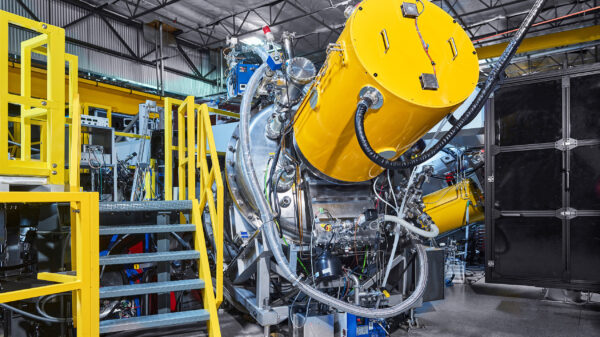California-based start-up Reflect Orbital has submitted an application to the Federal Communications Commission (FCC) for a license to launch a large mirror into space next year. The proposed mission marks the first step in an ambitious plan to deploy a constellation of over 4,000 solar reflectors designed to enhance solar energy production during twilight hours on Earth. The company aims to launch its demonstration satellite, known as EARENDIL-1, in April 2024.
The satellite will feature a mirror measuring 60 by 60 feet (approximately 18 by 18 meters) that will unfold once in orbit. Its purpose is to showcase the capability of directing sunlight down to specific targets on Earth. Reflect Orbital has secured a $1.25 million Small Business Innovation Research (SBIR) contract from the U.S. Air Force, which the company received in May. This funding supports their vision of providing light on demand after sunset and before sunrise to commercial clients.
Despite the potential for increased clean energy generation, concerns about light pollution have been raised by astronomers and biodiversity experts. They warn that the constellation could have detrimental effects on wildlife and disrupt astronomical observations. Reflect Orbital asserts that the mirrors will be used to foster energy production at night, improve crop growth, and offer emergency lighting in disaster zones.
Reflect Orbital’s spokesperson outlined plans for a future constellation that could orbit Earth in a sun-synchronous path, which would allow the satellites to maintain consistent solar exposure. The company claims significant interest from both commercial and government partners, stating they have received over 250,000 applications for service.
Nevertheless, the astronomical community has expressed serious concerns. John Berentine, an astronomer at the Silverado Hills Observatory in Tucson, Arizona, highlighted the intensity of the reflected light. “The beam reflected by these satellites is very intense, four times brighter than the full moon,” he explained. This brightness, coupled with the number of satellites flying in formation, could negatively impact wildlife and disrupt natural behaviors.
Robert Massey, Deputy Executive Director of the Royal Astronomical Society in the UK, underscored the project’s implications, stating, “The central goal of this project is to light up the sky and extend daylight and obviously, from an astronomical perspective, that’s pretty catastrophic.”
Reflect Orbital acknowledges these concerns and plans to utilize the demonstration mission to assess and mitigate potential negative impacts. The company claims its service is localized, with each reflection covering a defined 5-kilometer area for a limited time. Once the satellite passes over the target region, the mirror will be oriented away from the Earth.
During the demonstration in 2026, observers at designated sites will witness the satellite as a bright moving object in the sky, producing a gentle, moon-like glow on the ground.
The issue of light pollution is not new; it has been rising globally, with levels increasing approximately 10 percent per year since the widespread adoption of LED lighting. This has led to fewer visible stars at night, from about 250 stars visible two decades ago to around 100 today. Light pollution has also been associated with declining insect populations and increasing incidents of sleep disorders and mental health issues.
“Light pollution fundamentally disrupts the natural day-night cycle that has governed life on Earth for billions of years,” explained David Smith, advocacy and social change manager at BugLife. He emphasized how artificial light blurs the boundaries between day and night, impacting the biological rhythms of numerous species.
Astronomers have also raised alarms about the growing number of satellites affecting their observations. The controversy surrounding SpaceX’s Starlink program serves as a notable example, with thousands of low-altitude satellites creating streaks in astronomical images.
Massey noted that while these projects produce incidental light pollution, Reflect Orbital’s goal is to intentionally reflect sunlight back to Earth, which presents a different challenge altogether. “The brightening of the sky is the central premise,” he remarked.
Reflect Orbital has indicated that it intends to conduct an environmental impact assessment prior to expanding its constellation. The company aims to leverage the upcoming demonstration mission to collaborate with experts to better understand the ecological sensitivities involved and address any concerns raised by the scientific community.






































































